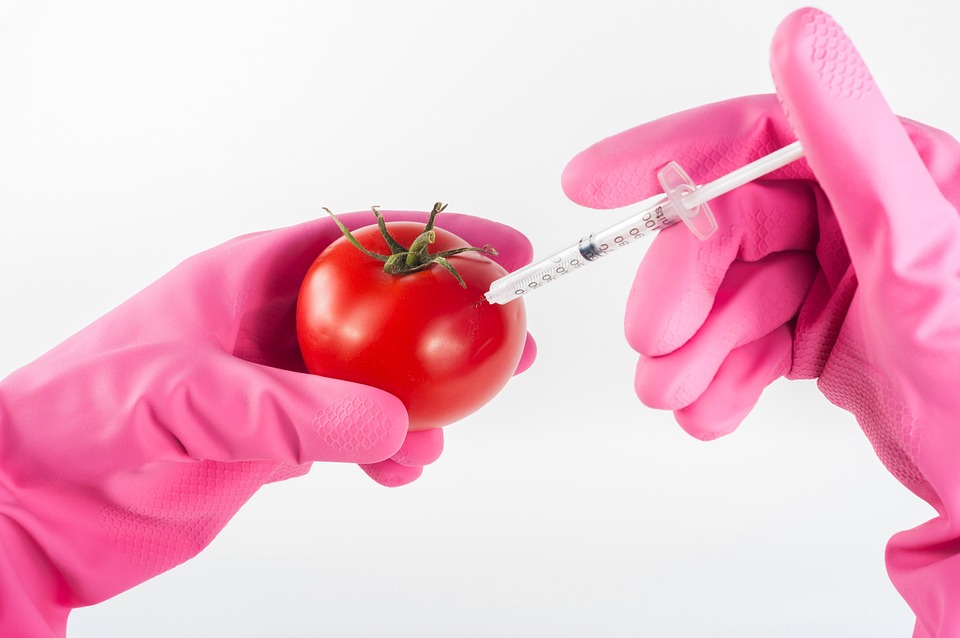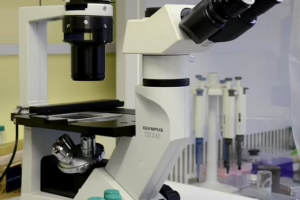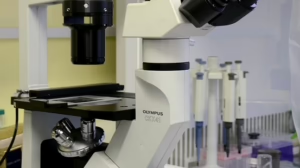The Microbe-Plant Connection: Uncovering the Hidden Helpers in Agriculture
Introduction
Agriculture, the backbone of human sustenance and economic stability, is continuously seeking innovative solutions to enhance productivity and sustainability. Among the various elements influencing agricultural success, an often overlooked and complex relationship exists: the connection between microbes and plants. This relationship is establishing itself as a vital pillar in our understanding of plant health, crop yield, and overall agricultural resilience in the face of climate change and soil degradation.
Recent research highlights that a diverse community of microorganisms, including bacteria, fungi, archaea, and viruses, play crucial roles in plant development, disease resistance, nutrient uptake, and even stress tolerance. This article delves into the nature of this microbe-plant connection, exploring how harnessing these interactions can revolutionize modern agriculture.
The Microbiome: A Hidden World
The term "microbiome" refers to the intricate community of microorganisms residing within a particular environment. In the context of agriculture, this often refers to the soil microbiome, which encompasses bacteria, fungi, archaea, and other microorganisms present in the soil, as well as those associated with plant surfaces and internal tissues. Each of these microbes plays specific roles within the greater ecosystem, impacting plant health and agricultural outcomes.
Soil Microbiome Composition
The soil microbiome is profoundly diverse. Estimates suggest that a single gram of healthy soil can contain billions of microorganisms, encompassing thousands of different species. These microorganisms interact with one another and with plants, facilitating processes essential for ecosystem functioning.
-
Bacteria: These tiny organisms are crucial for nitrogen fixation, nitrogen cycling, and organic matter decomposition. Certain species can solubilize phosphorus, making it available for plant uptake.
-
Fungi: Mycorrhizal fungi form symbiotic relationships with plant roots, enhancing nutrient absorption, particularly phosphorus, in exchange for carbohydrates produced via photosynthesis.
-
Archaea: Recently recognized as essential players in soil health, archaea influence nutrient cycling and contribute to the overall microbial balance in the soil.
- Viruses: Although often regarded as harmful entities, some plant viruses can influence microbial populations and may play regulatory roles in plant-microbe interactions.
The Role of Microbes in Plant Health
Microbial communities not only enhance nutrient availability but also contribute to plant immunity, stress resilience, and overall health.
Nutrient Acquisition
Microbes play a critical role in breaking down complex organic matter and converting nutrients into forms that plants can utilize. For example, rhizobacteria, often referred to as plant growth-promoting rhizobacteria (PGPR), can enhance nutrient uptake by increasing the availability of essential elements such as nitrogen, phosphorus, and potassium.
-
Nitrogen Fixation: Certain bacteria (e.g., Rhizobium species) can fix atmospheric nitrogen into a plant-available form. This process is particularly vital for leguminous plants.
- Phosphate Solubilization: Mycorrhizal fungi and specific bacterial species can solubilize phosphate, which is often limited in agricultural soils.
Disease Resistance
Microbes also play essential roles in plant disease resistance. Healthy microbial communities can outcompete pathogenic organisms for resources and space, effectively reducing disease incidence.
-
Induced Systemic Resistance (ISR): Some beneficial microbes can induce systemic resistance in plants, enhancing their immune responses against various pathogens.
- Antagonism: Certain bacteria and fungi produce antibiotics or other metabolites that inhibit pathogen growth.
Stress Tolerance
Microbes can enhance plant resilience to abiotic stresses such as drought, salinity, and extreme temperatures. Symbiotic relationships with mycorrhizal fungi, for example, can improve water and nutrient uptake, helping plants cope with unfavorable conditions.
-
Drought Resistance: Plants associated with mycorrhizal fungi generally exhibit improved water retention and can withstand prolonged periods of drought.
- Salinity Tolerance: Some microbes contribute to boosting plant tolerance to saline conditions, which is increasingly important given global shifts in climate.
The Impact of Agricultural Practices on Microbial Communities
The way we manage agricultural soils dramatically affects the composition and function of microbial communities. Practices such as monocropping, excessive use of chemical fertilizers and pesticides, and tillage can disrupt these essential microorganisms.
Monocropping
While monocropping can simplify management and increase short-term yields, it often leads to a decline in microbial diversity. Diverse cropping systems, on the other hand, can support a wider range of beneficial microbes, promoting healthier soils and plants.
Chemicals in Agriculture
The extensive use of synthetic fertilizers and pesticides has been linked to declines in microbial diversity. For example, certain herbicides may reduce beneficial bacteria populations, limiting nitrogen fixation and nutrient cycling.
Tillage Practices
Tillage can disturb soil structure, negatively affecting the habitat and survival of many soil microorganisms. No-till agriculture, however, has been shown to promote higher microbial diversity and resilience.
Harnessing the Microbe-Plant Connection
Understanding the microbe-plant connection opens avenues for augmenting agricultural practices through sustainable approaches. Various methods can be employed to harness these microbial relationships to enhance agricultural productivity and soil health.
Inoculation with Beneficial Microbes
One of the primary strategies involves inoculating seeds or soil with beneficial microbes. This practice can include the application of:
-
Biofertilizers: Products containing live beneficial microorganisms that promote plant growth by increasing the availability of nutrients.
- Biopesticides: Natural organisms or substances derived from microorganisms that can control pests and diseases without harming beneficial partners.
The Role of Cover Crops
Implementing cover crops serves as a strategy not only to control soil erosion but also to enhance microbial diversity. Cover crops improve soil organic matter content, fostering a conducive environment for beneficial microbes.
Rotational Grazing and Crop Rotation
Adopting crop rotation and rotational grazing can enhance the resilience of both the plants and associated microbial communities. Diverse plant systems create a variety of habitats for a wider array of microbes, promoting ecosystem health.
Organic Farming and Soil Restoration
Organic farming practices, which emphasize natural inputs and sustainability, tend to foster more diverse microbial communities. By avoiding synthetic chemicals and embracing practices like composting and mulching, farmers can promote soil health and nutrient cycling.
Research Highlights: Case Studies and Innovative Approaches
Recent studies underscore the potential of leveraging microbial plant connections in practical agricultural settings.
Case Study 1: Mycorrhizal Fungi in Viticulture
A significant body of research has indicated that employing mycorrhizal fungi in vineyards can lead to enhanced grape yield and quality. The symbiotic relationship helps vines better access water and nutrients, resulting in improved fruit composition and an overall reduction in the need for chemical inputs.
Case Study 2: Bioinoculants in Vegetable Production
The application of specific bioinoculants in vegetable production has shown promising results. Studies have reported increased yield, improved plant health, and higher resistance to pathogens, demonstrating the potential economic benefits for farmers who adopt these practices.
Case Study 3: Rhizobial Inoculation in Legumes
Research on leguminous crops has repeatedly demonstrated that rhizobial inoculation can significantly improve nitrogen fixation rates, translating into better growth and yield without the need for synthetic nitrogen fertilizers.
Challenges and Future Directions
Despite the promising avenues presented by harnessing microbial relationships for agricultural advancement, several challenges remain.
Knowledge Gaps
Much research is needed to understand the complexities and interactions among different microbial communities. Current findings emphasize correlations but often fail to establish clear causal relationships.
Commercialization and Accessibility
The commercialization of beneficial microbes presents challenges, especially in ensuring the consistency and efficacy of products in diverse environments.
Climate Change Impacts
The ongoing impacts of climate change add another layer of complexity to the microbe-plant relationship. As conditions shift, so too will the microbial communities, necessitating ongoing research to adapt practices accordingly.
Conclusion
The microbe-plant connection represents a burgeoning frontier in agricultural science. By understanding and utilizing these interactions, we stand on the brink of a revolution in sustainable farming. Such knowledge can inform practices that not only increase crop productivity and resilience but also help restore the health of our ecosystems.
The integration of beneficial microbes into agricultural practices could ultimately lead to a path where food production meets the pressing challenges of sustainability, yields, and environmental health. As research advances, embracing the principles of microbial partnerships may well define the future of agriculture.
Modern Footnote Sources
-
Wagg, C., et al. (2014). "Soil biodiversity and soil community composition affect plant growth." Nature Plants, vol. 3, article 14020.
-
Bhattacharya, A., & Ghosh, P. K. (2019). "The role of arbuscular mycorrhizal fungi in the rhizosphere: A comprehensive review." Ecological Engineering, vol. 133, pp. 126-139.
-
Liu, W., et al. (2017). "The role of microbial communities in the transition to sustainable agriculture." Science, vol. 355, pp. 45-50.
-
van der Heijden, M. G. A., et al. (2015). "Mycorrhizal fungal communities benefit plants." Science, vol. 349, pp. 54-60.
-
Zmińska, A., & Prusinowska, A. (2020). "Impact of soil management practices on soil microbial communities." Applied Soil Ecology, 151, 103563.
- Leff, J. W., et al. (2015). "Consistent responses of soil microbial communities to elevated atmospheric CO₂ across diverse ecosystems." Nature Communications, 6(1), 5705.


























Add Comment